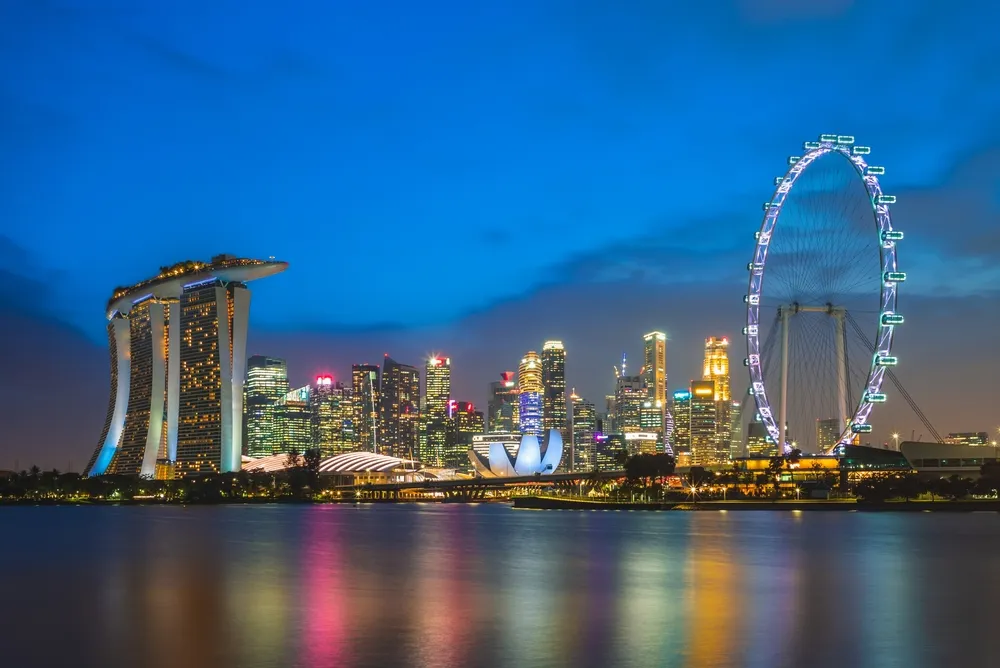Understanding the Schengen Visa Requirements for Filipinos
The Schengen visa lets you travel to 26 European countries for up to 90 days within a 180-day period. As a Filipino citizen, knowing these requirements is essential to planning your European trip. You'll need this visa to visit countries like Austria, France, Germany, Italy, and others listed below:
Austria
Belgium
Croatia
Czech Republic
Denmark
Estonia
Finland
France
Germany
Greece
Hungary
Iceland
Italy
Latvia
Liechtenstein
Lithuania
Luxembourg
Malta
The Netherlands
Norway
Poland
Portugal
Slovakia
Slovenia
Spain
Sweden
Switzerland
The Schengen Visa Application Process from the Philippines
1. Determine your main destination
The first step is to choose the main Schengen country you'll visit. This country will handle your visa application. If you're visiting several countries, your main destination is where you'll stay the longest.
2. Booking an Appointment
After deciding your main destination, schedule an appointment at that country's consulate, embassy, or visa center. You book an appointment as part of your Schengen visa application process online through their website or through services like VFS Global. For example, you can book your appointment at the VFS Global visa application center in Manila.
3. Gathering Required Documents
Next, gather all the required documents. These typically include:
- Completed and signed Schengen visa application form
- Passport with a validity of at least 3 months beyond your planned stay
- Two recent passport-sized photos
- Proof of travel arrangements (e.g., flight reservations, hotel bookings)
- Proof of financial means (e.g., bank statements, pay slips)
- Travel medical insurance with a minimum coverage of €30,000
- Additional documents depending on the purpose of your trip (e.g., business, study, family visit)
Having all documents ready and complete will streamline your application process and reduce the chances of delays or rejections.
4. Attending the Visa Interview
Go to your Schengen visa interview at the appointed time. Bring your application and documents. Expect questions about your travel plans, finances, and why you're visiting.
Schengen Visa Fees and Processing Times
The Schengen visa application fees for Filipinos cost €80 (around ₱4,600) for adults and €40 (around ₱2,300) for children aged 6-12. This fee is non-refundable, so make sure your application is complete and accurate to avoid losing money.
It can take up to 15 business days to process a Schengen visa application from the Philippines. One of the many valuable Schengen visa application tips is to apply 4-6 weeks before your trip to account for peak season delays. Applying early also gives you time to fix any problems that may come up with your application.
Tips for a Successful Schengen Visa Application
1. Apply Well in Advance
Since processing times can vary, especially during peak travel seasons, it's smart to start your Schengen visa application early. Applying in advance gives you time to manage any additional requirements that may come up before your trip.
2. Ensure Complete and Correct Documents
Make sure you have all the required documents, and double, triple-check that they are complete and correct. Missing or incorrect documents can cause delays or get your visa application rejected.
3. Prepare for the Interview
At the visa interview, you may be asked about your travel plans, finances, and why you're visiting. Be honest and give clear answers that match the details of your application and documents.
4. Purchase Comprehensive Travel Insurance
To get a Schengen visa, you must have travel insurance with at least €30,000 coverage. Your travel insurance for Schengen visa should cover medical emergencies, repatriation, and other travel risks.
5. Keep Copies of Your Documents
Keep copies of your visa application and all supporting documents. They'll come in handy if you need to refer to them during your application or for future travels.
6. Seek Guidance When Needed
If you have any questions or concerns about the Schengen visa application process, do not hesitate to reach out to the consulate or visa center. They can give you helpful advice to make sure your application is correct and complete.
Travel Insurance: A Critical Requirement
Travel insurance is essential as it is one of the main Schengen visa requirements for Filipinos. It protects you from unexpected medical emergencies, trip cancellations, and other travel problems.
Oona’s Schengen Accredited Travel Insurance
For Filipino travelers, Oona offers affordable comprehensive travel insurance starting at PHP 299, which meets Schengen visa requirements. It's accepted by all Schengen embassies, giving you peace of mind for your European trip.
Common Reasons for Schengen Visa Rejections
Understanding common reasons for visa rejections can help you avoid these pitfalls. Some common reasons include:
Insufficient Proof of Financial Means
You need to show you have enough money to support yourself during your stay. Provide bank statements, pay slips, or other financial documents. Not having enough proof of funds is a common reason for visa rejections.
Incomplete or Incorrect Documentation
Submitting incomplete or incorrect documents can lead to visa rejection. Ensure that all documents are accurate, complete, and up-to-date.
Lack of Travel Insurance
You must have travel insurance that covers at least €30,000 in medical expenses, including emergency medical evacuation and repatriation. Lack of proper insurance is another common reason for visa denial.
Unclear Travel Itinerary
Clearly outline your travel plans, including flight reservations, hotel bookings, and the purpose of your visit. Unclear or poorly planned itineraries can cause doubts and result in a visa denial.
Previous Visa Violations
If you have violated visa conditions or overstayed in the Schengen Area before, your current visa application might be rejected. Follow all visa rules to avoid future problems.
Additional Tips for First-Time Applicants
For first-time Schengen visa applicants from the Philippines, the process can be daunting. Here are some additional tips to help you navigate the application process smoothly:
1. Familiarize Yourself with the Process
Before you begin your application, take the time to familiarize yourself with the Schengen visa application process. Understand the requirements, gather the necessary documents, and plan your application timeline accordingly.
2. Seek Assistance from Visa Services
Consider using visa services or agencies that specialize in Schengen visa applications. These services can provide expert guidance, assist with document preparation, and help schedule your appointment, increasing your chances of a successful application.
3. Be Honest and Transparent
Honesty and transparency are crucial throughout the application process. Provide accurate information, disclose any previous visa rejections or travel history, and ensure all documents reflect your true circumstances.
4. Maintain a Clean Travel Record
A clean travel record can significantly enhance your chances of obtaining a Schengen visa. Avoid overstaying your visa, adhere to all travel regulations, and maintain a positive travel history.
5. Build a Strong Application
Building a strong application involves more than just submitting the required documents. Present a well-organized and convincing application that clearly demonstrates your travel plans, financial stability, and intention to return to the Philippines after your trip.
Conclusion
Applying for a Schengen visa from the Philippines may seem overwhelming, but with careful preparation and attention to detail, it can be a straightforward process. By understanding the requirements, gathering the necessary documents, and following the outlined steps, you can increase your chances of a successful application.
Remember to apply well in advance, ensure all documents are complete and accurate, and seek guidance when needed. With the right preparation, you'll be well on your way to exploring the beautiful and diverse countries of the Schengen Area. Safe travels!









































































